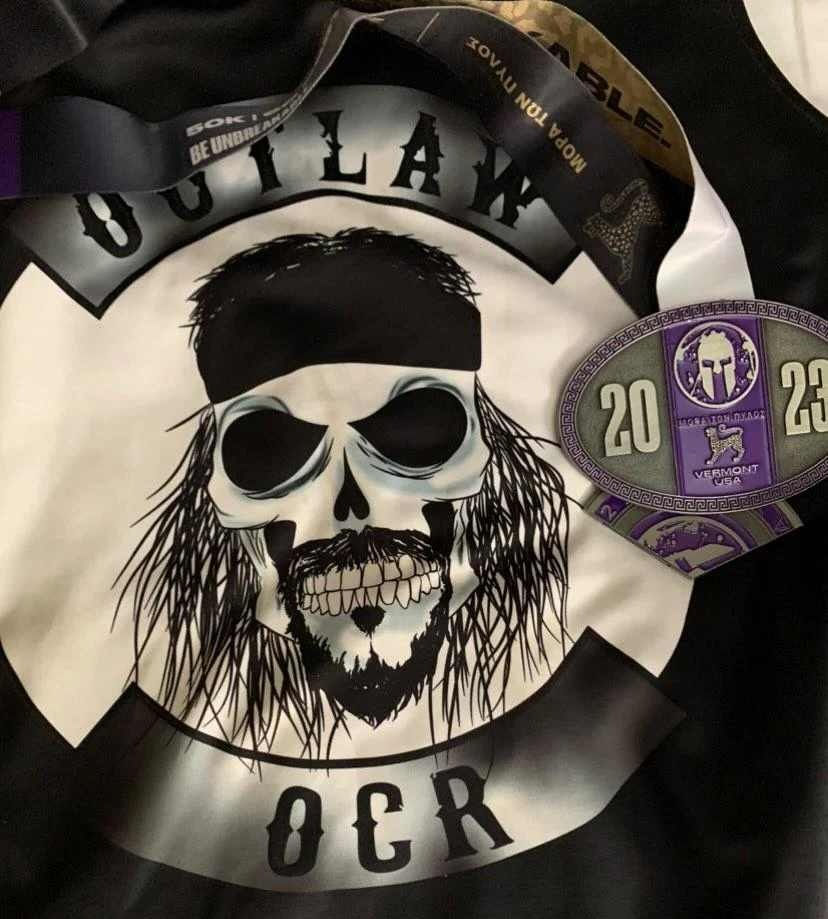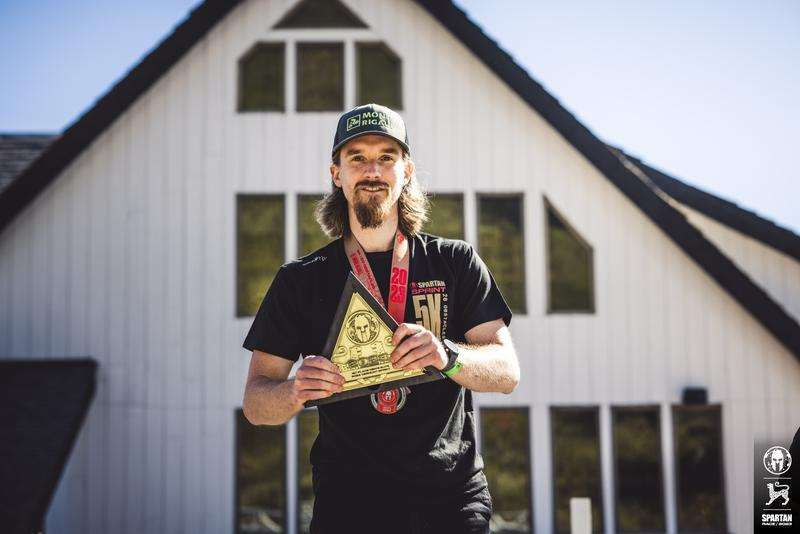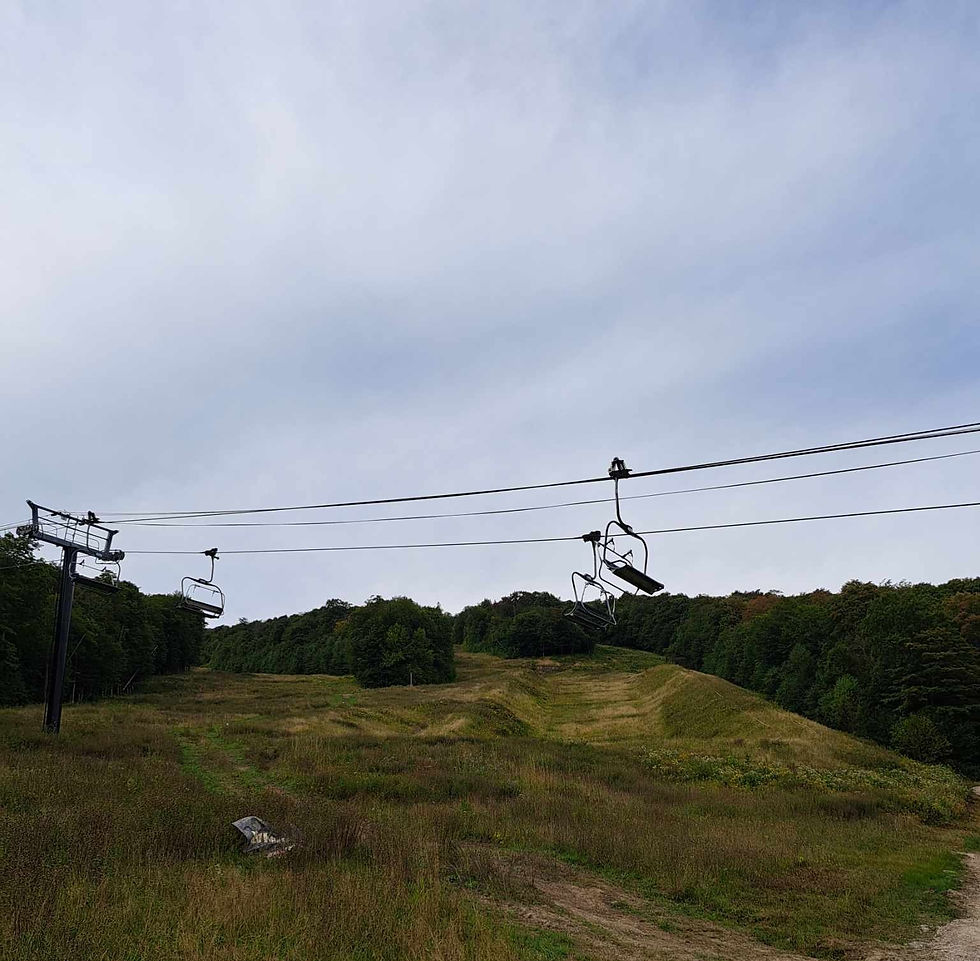You raced Killington...now what? Tips to conquer the Killington Ultra, Beast, and Sprint.
- Admin
- Sep 20, 2023
- 4 min read

Sponsored by:
Just like that, Killington has come and gone. For many, participating at Killington required months of advanced planning, training, early mornings, and long days. This venue is unforgiving, and even the most prepared athletes might not have the day they wanted due to weather, fueling issues, or race-day injuries (or perhaps the mountain simply got the best of them). Obstacle racing is unpredictable and anything can happen, which can make for exciting and frustrating days, but there are things we can do to put all chance on our side. If you raced this weekend, you may be wondering how to move forward after this epic event. Read on below to hear our our team of Outlaw OCR athletes fared and gets some ideas on how you can better prepare for Killington (or any other OCR) next year.
TEAM HIGHLIGHTS

ULTRA- Sean, Age Group, Completed and earned his buckle! BEAST- Susan, 4th Elite
BEAST- Shaun, 6th Elite
BEAST- Iryna, 8th Age Group (North AG American Championships)
BEAST- Sara, 9th Age Group (North AG American Championships)

SPRINT- Shaun, 1st Elite
SPRINT- Susan, 2nd Elite
SPRINT- Sara, 2nd Age Group

HOW WE PREPARED (ULTRA, BEAST, SPRINT) Ultra: Our Ultra athletes prepared for these events with ALOT of incline work (uphills and downhills). This also included alot of big weekends where they would run multi hour race simulations on one day, followed by another multi hour race simulation on day 2. These big, back to back sessions allowed our athletes to accumulate big time on feet and to practice race day fueling and hydration. It goes without saying that long sandbag/bucket carries were a staple in their preparation, knowing that they would likely have 2x sandbag carries every lap as well as the the bucket carry. Knowing the carnage of last year's sandbag carry (if you know, you know) , we anticipated having something of similar length (~300-400m), so we prepared accordingly for carries that could take 7-10 minutes in length.
Beast: Similar to our Ultra athletes, our athletes preparing for the Beast typically had some longer race simulations (2-3 hours) as well as long runs (25-30km/15-18 miles, or equivalent time on feet if running on trails/mountains) as well as a big focus on heavy carries (anticipating that the half-pipe sandbag carry would make a return this year). Training was similar to our Ultra athletes, but time on feet was less as they were not preparing to be on course for 10-15 hours.
Sprint: None of our athletes were specifically preparing for the Sprint, but rather, it was a race many would consider jumping into if they weren't too destroyed by the Beast. That being said, all of our athletes (including Ultra athletes) have higher intensity work in their training plans year-round (working around 1000m/1 mile/3000m/5k paces) in order to be well rounded and develop all energy systems, so they should be able to jump into this event and be able to handle the shorter duration and higher intensity.

HOW TO PREPARE FOR KILLINGTON 2023 (or other mountain courses) A) Weekly vert training (incline work) is the name of the game. The more time you can spend going up hill at steeper grades, the better. If you have no access to mountains, working up to 45:00-60:00 on treadmills (>15% incline, ideally even 30-40%) or Stairmasters will really help. B) Incorporate long downhill running. This course had some runnable downhills (including fire roads) as well as some steep and technical (i.e that final descent) downhills. If you're not practicing on sketchier/technical downhills you may lose ALOT of time as you descend, leaning way back on the brakes (which will only destroy your legs further before that final sandbag carry). While there is a cardiovascular component to downhill running, much of it comes down to skill (practice) and a certain level of fearlessness. The final downhill is a section of course where you can lose or gain as much time as you want...you just have to be willing to "lean into" the downhill and not let fear win. C) Incorporate long heavy carries. The bucket carry in this year's event wasn't too long, but it would definitely slow you down if you were unprepared for it. On the other hands, the sandbag destroyed many (as noted by the sandbags lining the course on Sunday morning, left there by those who were broken by it the day before), but it CAN be prepared for. Start small with some ~100m carries (making sure to incorporate up/downhills), and progress to 400m carries. If distance-based carries are not possible due to your personal setup, try and build up to 7-10 minute carries (or more of this particular carry up to >10:00).
NEED HELP? Our athletes all followed 100% personalized training plans to help them prepare for these races. This means that they have done physical assessments which have allowed us to determine their fitness level and establish personalized running paces, estimated heart rate zones, and training plans/progressions based on their goals and schedules. This means there is no guessing in their training, they simply wake up, check the plan, and get to work. If you are tired of Killington conquering you, send us a message today to get started on your own training plan so that you can conquer Killington. Click the button below to learn more about our personalized training plans:
Have question about our training plans or preparing for Killington 2023? Send us an email: outlawocr@gmail.com.





Comments